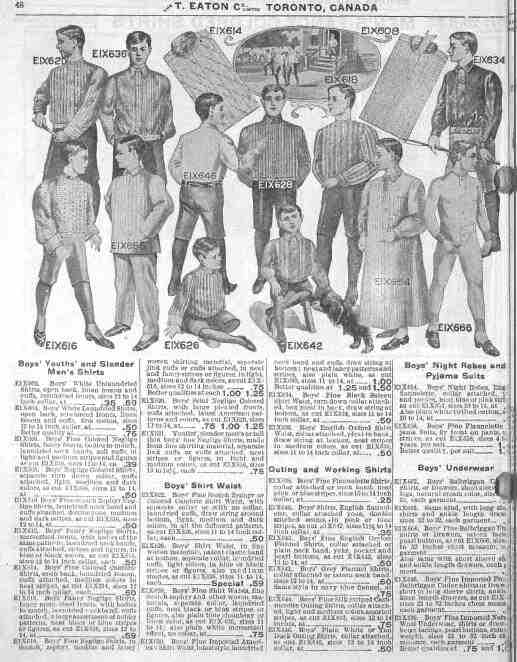
Figure 1.-- The Eatons Spring-Summer 1907 offered shirtwaists with a variety of other garments including sleepwear. |

|
Boys in the early-20th century needed warm sleeping garments because bedrooms were frequently unheated—hence the use of flannelette material. This was especially the case in a northern country like Canada. Even in the summer catalogue no broadcloth or lighter weight materials are offered. Notice that pajamas were alread beginning to replace nightshirts which apparently were called sleeping gowns in Canada. Perhaps that was a British term.
This Canadian retailer began publishing mailorder catalogs in 1881, at least that is we begin noticing them. We have catalogs from the 1970s, although we do not know about the company's current status. The 1970s catalgs were full of clothes which look like American styles. Timothy Eaton, founder of the huge all-Canadian department store chain bearing his name, was an Irish immigrant born on a tennant farm in northern Ireland. He was born in 1834 and followed his brothers to Canada in 1854. His brothers had opened a small dty goods store in St. Marys. Timothy Eaton began his business with a small dry goods business in Toronto during 1869. He built a giant retail store in Ontario’s capital city along with a country-wide mail-order business and a big new branch store in Winnipeg, by the time of his death in 1907. The Winnipeg branch was the first of many branches. Eaton Company business establishments eventually spread all across Canada when Timothy’s family successors extended the Eaton empire. Timothy masterminded the company during the crucial period of its early development, spanning nearly 40 years. It was Timothy who implemented the concept of the "Department Store", in Canada, a concept which were already flourishing in London, Paris, and New York.
We have only limited information on nightshirts. We are not sure when they became commonly worn. We know they were worn in the 19th century, but we are not sure when they first appeared. I believe they were also worn in the 18th century, but have no information to substantiate this yet. A reader writes, "Before the 19th century the nightshirt was worn by few people. In several places of Europe the people go to bed naked, in other places wearing the day shirt. Only in 19th century the nightshirt became a common wear." Boys wore nightshirts to bed like their parents. Nightshirts were commonly worn throughout the 19th century. We note night shirts advertized in catalogs. One Americam pattern company offered night shirt patterns in 1869. We note an American boarding school, the Holderness School, in the 1880s. Until the middle of 20th century men and boys slept in similar nightshirts. The nightshirt was a bedtime garment styled like a man’s shirt. It was done in various lengths, usually to the knee or calf. It had a rounded hem and a slash at the side seams. Most of the nightshirts we have seen are white. We are not sure if there were colored or print nightshirts. Other specialized sleepwear like pajamas and sleepers only appeared in the 20th century. We notice German mailorder catalogs offering nightshirts into the 1950s. A Bulgarian reader tells us, Nightshirts were no longer common in Bulgaria when I was a boy in the 1970s. They were earlier very common. My grandmother who was a little old fashion made me a nightshirt when I was 10 years old. I remember that I rather liked it."
Pajamas are a relatively recent innovation in boyswear. Pajamas are derived from a Hindi word. This is because they were introduced to Europe and America about 1880 from India for men to wear for sleeping instead of nightshirts. Pajamas consisted of a matching jacket and trousers--loose fitting trousers. There is a difference between the spelling in America and Britain. Pajamas, is spelled pyjamas in Britain, Canada and other British Commonwealth countries. Pajamas were not commonly worn in the late 19th and early 20th century, especially by boys. Nightshirts were still much more common well into the 20th century. There are several different types of pajamas worn by boys. Pajamas unlike nightshirts tend to be distinctive for boys and girls. Our information about pajamas is still very limited. We would be very interested in any information HBC readers may have.
Boys in the early-20th century needed warm sleeping garments because bedrooms were frequently unheated—hence the use of flannelette material. This was especially the case in a northern country like Canada. Even in the summer catalogue no broadcloth or lighter weight materials are offered. Notice that pajamas were alread beginning to replace nightshirts which apparently were called sleeping gowns in Canada. Perhaps that was a British term.
The Eatons ad copy read, "Boys’ Night Robes, English Flannelette, collar attached, yoke and pocket, neat pink or blue stripes, as cut EIX654, sizes 10 to 14 at [price obscured)." Note the term "night robes". mericans would have said "night shirts"
The Eatons ad copy read, "Boys’ Fine flannelette pyjama suits, fly front on pants, pin stripes, as cut EIX658. 4 to 14 years, per suit, $1.00. Better quality, per suit $1.50." Pajamas seem to be seen as a garment for younger boys. otice the British spelling.
Navigate the Boys' Historical Clothing catalog/magazine pages:
[Return to the Main Canadian mail order 1907 page]
[Return to the Main Canadian mail order 1900s page]
[Main photo/publishing page]
[Store catalogs]
[Fashion magazines]
Navigate the Boys' Historical Clothing Web Site:
[Introduction]
[Activities]
[Bibliographies]
[Biographies]
[Chronology]
[Clothing styles]
[Countries]
[Contributions]
[FAQs]
[Glossaries]
[Images]
[Links]
[Registration]
[Boys' Clothing Home]
Navigate the Boys' Historical Clothing Web Site:
[Sailor suits]
[Sailor hats]
[Buster Brown suits]
[Tunic]
[Eton suits]
[Rompers]
[Tunics]
[Smocks]
[Pinafores]
[Knee pants]
[Long stockings]
